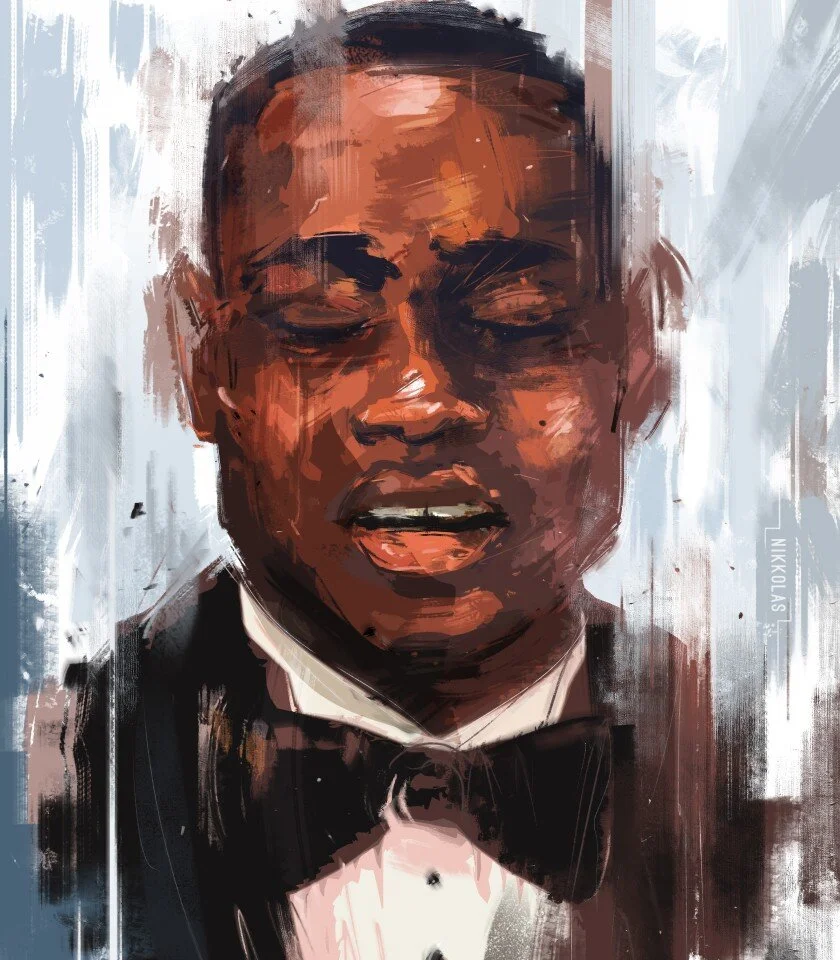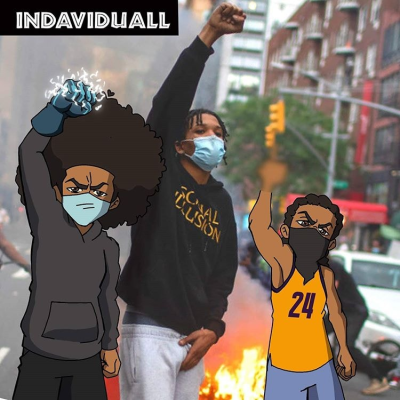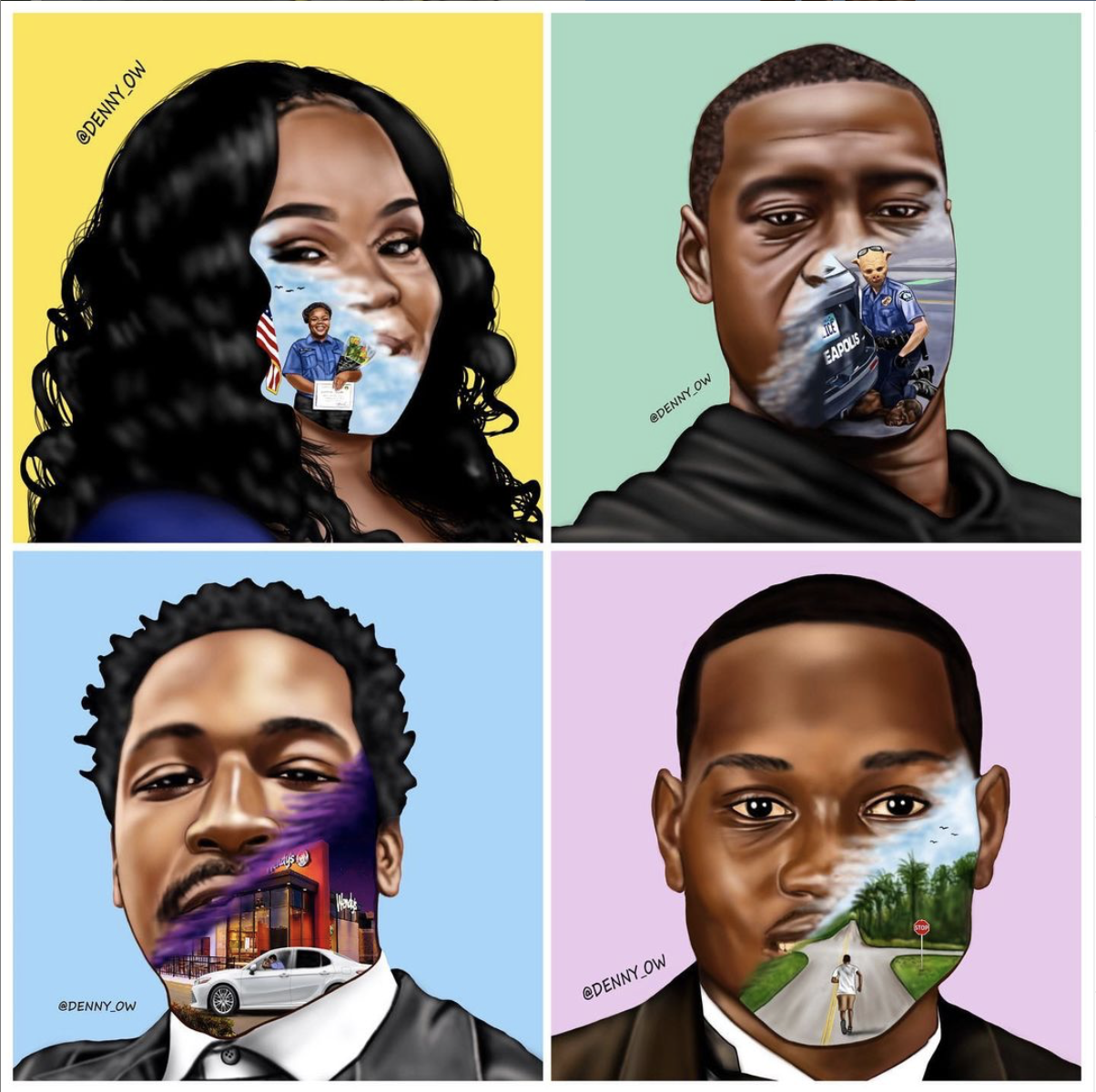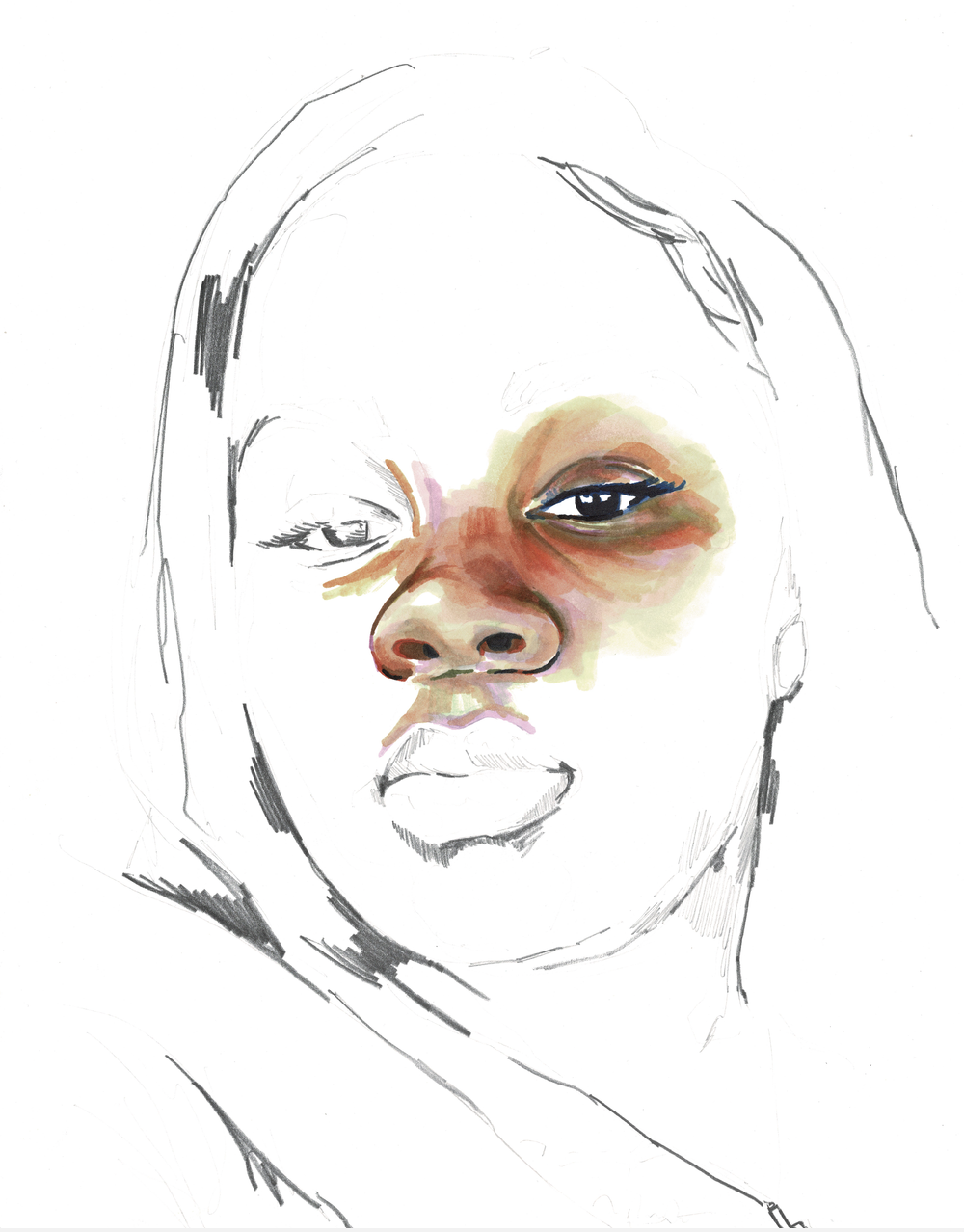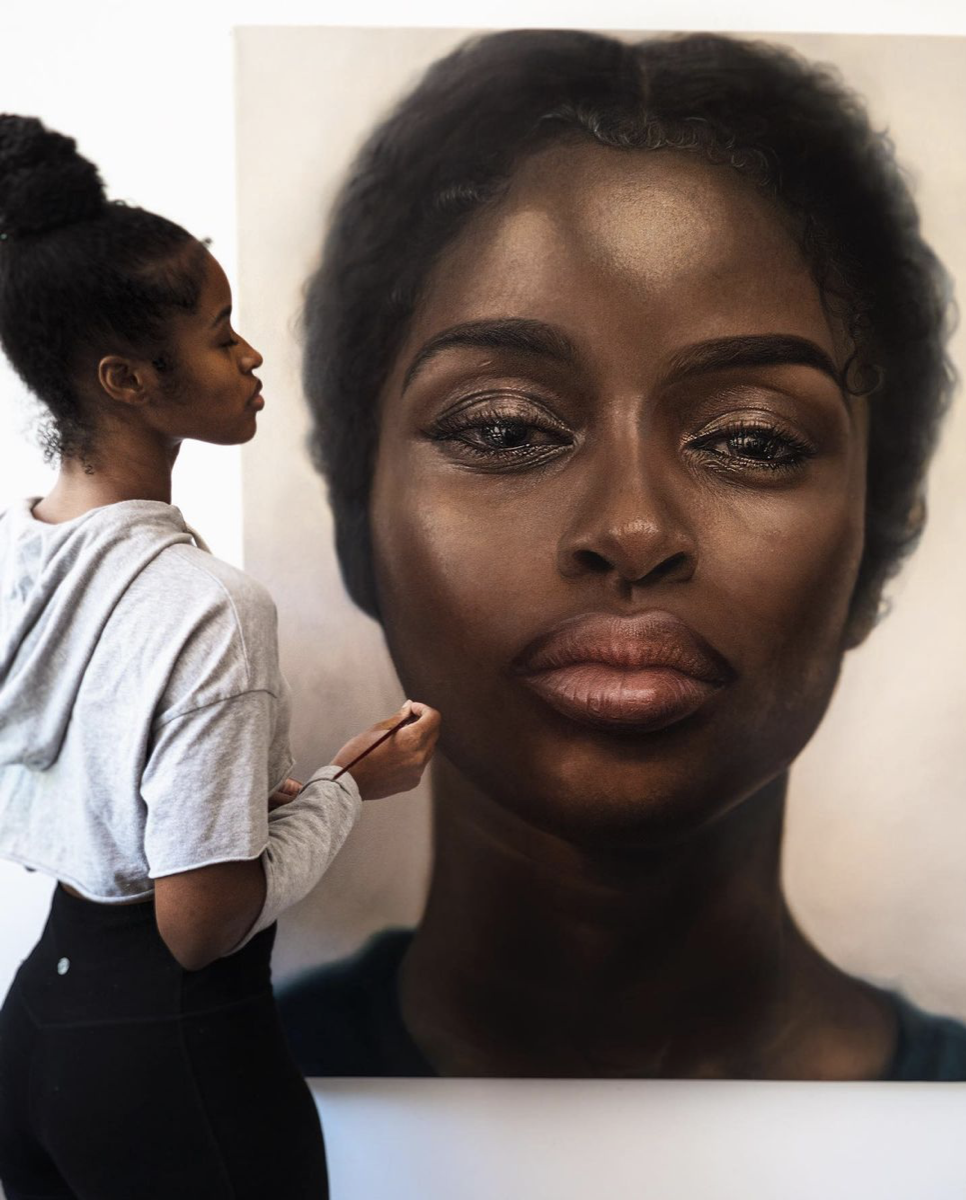Black Artists Capture Black Lives Matter
It’s hard to find a point of expression when you’re overwhelmed with so many emotions at once. When speaking about the murders of Ahmaud Arbery, Breonna Taylor and George Floyd, it can be extremely difficult to artistically express the sentiments you’d like to convey. The topic is deeply personal and triggering, it’s a reminder of the disregard for Black lives and resurfaces painful memories. Research as presented by The Washington Post showed that ‘anxiety and depression among African American shot to higher rates than experienced by any other racial or ethnic group’ during the week of George Floyd's death. In addition the BBC interviewed Black Brits on the mental impact of George's death where Tarah Welsh expressed that ‘the pain goes back centuries, but much of the hurt is recent.’ With the mental wellbeing of Black people suffering during this period, art has continued to be a means of therapy and expression to help alleviate the discomfort. As a reaction to this, Black artists; Melissa Koby, Rochelle ‘Creative’, Nikkolas Smith, David A, Denny-ow, Adrian Brandon, Rashida Chavis, Jade Yasm, and Titus Kaphar have created thoughtful, emotive and innovative images using various forms of media to memorialise their deaths and the BLM protests that have ensued across the globe By creating in this way, their art activism ensures that each moment goes beyond its definition by collecting and preserving the expressions behind the ongoing movement while we rally towards change.
Melissa Koby is an illustrator based in Tampa, Florida who began to share her work on Instagram during lockdown. Melissa said that she wanted to ‘create visuals that made people feel good, if only for the seconds they looked at them.’ Social media is often filled with graphic images and videos of victims of Police brutality, so artwork such as Melissa may provide a sense of hope and unity in the midst of an intense and triggering timeline. Her work is focused on creating imagery of Black women relaxing, being loved on and loving. In relation to the recent protests, she created an illustration of three faceless Black women raising their fists as they stand side by side. Their lack of facial features allows us to reimagine our own faces or that of our friends on her artwork.
Rochelle Creative’s work is centred around Women of colour, sisterhood and self care. Recently she created a piece called #SayHerName, where the names of several Black Women who have been murdered sit within a womens afro, signifying that this woman could be anyone of these individuals. This piece is available to buy on Etsy with 100% on the proceeds going to Black Vision Collective, a Black, Trans & Queer led organisation. #SayHerName was originally created to ‘bring awareness to the often invisible names and stories of Black women and girls who have been victimized by racist police violence.’ However, during protests and within the media their names still remain lost or barely mentioned, hence the need for artwork that literally spells out who they were.
Concept artist, illustrator and theme park designer, Nikkolas uses the term Artivism to describe his creations. Nikkolas’ portraits of the victims of police brutality have gained a lot of attention in recent weeks. His work has been featured in Time magazine, commissioned by Black Lives Matter and by the family of Frederick Douglas. His aim was to ‘create some sort of voice for those voices who have been taken.’ The use of abstract brush strokes makes the images appear as if they are being washed away or as Nikkolas said ‘a little bit broken which is parallel to the situation.’ With uncensored photos of dead Black people swarming the internet, paintings like Nikkolas’ help to ‘celebrate them through art, showing their value and delicate humanity.’
Illustrator and animator, David A created a series of illustrations of his favourite cartoon characters standing alongside photographs of protesters. For many young Black people growing up cartoons such as The Boondocks and The Proud Family were opportunities to see characters who looked liked themselves and their family within the media. These characters that we invited into our homes soon began to feel like friends, and with their world mirroring our own it feels natural that they would be protesting with us too.
Denny-ow has been creating abstract portraits of the different victims of police brutality. In his images half of their face displays the ordinary activities they were doing before they were killed. The images include, (Ahmaud Arbery) jogging or (Elijah McClain) walking home, while others display casual snippets of their life, like Breonna Taylor smiling and holding flowers at what appears to be an enrollment. His artwork shines a light on the lives lived alongside the unjust way they were murdered. As a result, viewers can never look at his artwork and forget a part of their story.
Adrian's work focuses on the many variations of the Black experiences, from the ‘unique joy, swagger and love’ to the injustices the Black community faces. His Stolen series is dedicated to the victims of police brutality, where he discusses that much of America has ‘become numb to the loss of Black lives.’ To combat this numbness Adrian uses the format of time to define how long he will colour a portrait in for; one year in life equals one minute of colouring. Sadly they will never know what the rest of their lives held, and thus we will never see their fully-coloured portraits.
Rashida Chavis’ work is inspired by Black women, culture, heritage and nature. Recently she was commissioned by NPR for an article titled ‘This is how I feel: a playlist by young black listeners.’ A quote within the feature says ‘it is difficult to find the right words to express the degree of anger, helplessness and pain I feel towards the constant state-sanctioned terrorism toward Black people in America.’ Which is why the playlist was created, to work through their emotions without the need for words. This image by Rashida is one many of us can relate to, the moment you close your eyes to let the music in and tears out.
Jade Yasm is an oil painter who in the wake of the recent protests painted a Black woman looking directly at the viewer with tired, tear filled eyes. In her statement she said that ‘as a painter, I sometimes don't have the words to express my sentiments so here is a visual representation.’ Perhaps other Black women can look at this image and read what her face says without the need to even form the sentence within their own head. For us we see a woman who is exhausted yet not defeated, her eyelids lowered, but not fully closed.
Painter, sculptor, filmmaker, and installation artist, Titus Kaphar, painted a Black mother holding the empty silhouette of her child. He said that ‘In her expression, I see the Black mothers who are unseen, and rendered helpless in this fury against their babies.’ Some may see the image as a collective loss of a life, others may feel it hones in on each woman's individual loss. For Time magazine, Kaphar said ‘This Black mother understands the fire. / Black mothers understand despair. / I can change NOTHING in this world, / but in paint, / I can realize her…. / This brings me solace… / not hope, / but solace.’ Within the red border the names of 35 Black people who died as a result of systematic racism has been written. So although one woman's pain and loss has been memorialised through this image, the despair we see isn’t an isolated emotion exclusive to one face.
These artists have captured the variety of emotions felt by grieving Black individuals across the globe. While we are grateful for their talents and ability to express the feelings that sometimes even words cannot capture, we still feel the weight behind the inspiration of their work. We hope that these images serve as reminders that behind every hashtag and within each statistic was a human being with a unique laugh, memories, skills, preferences and other intricacies that creates an individual. The artwork shared and those that exist outside of this small but beautiful collection may even encourage other Black people to use art and its many mediums as an outlet for their own emotions. Let these creations speak when words cannot be found.





